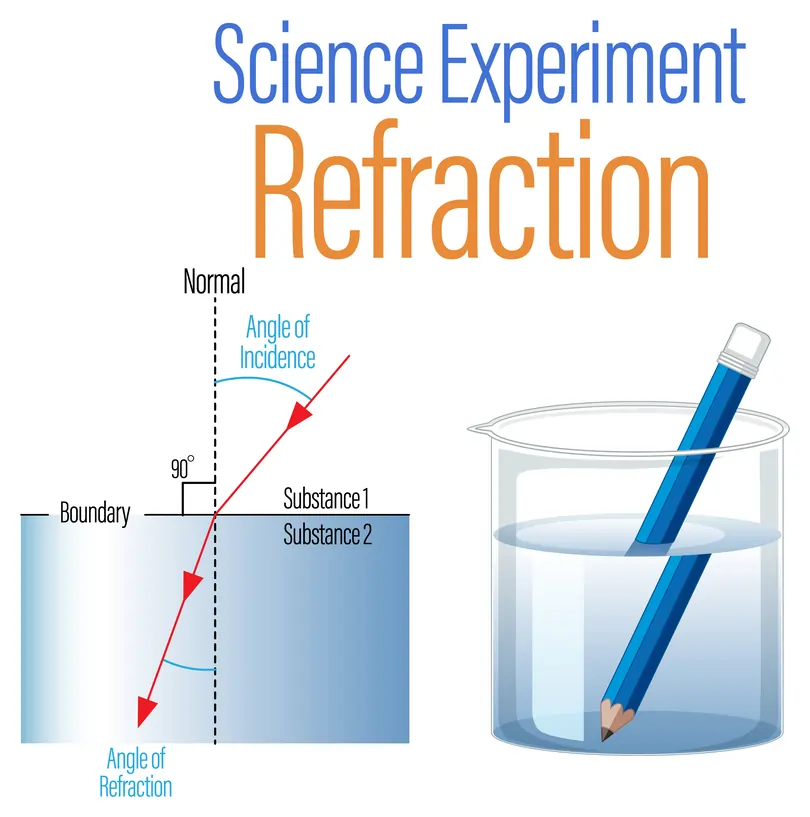Refraction of light
Light is a remarkable phenomenon that surrounds us every day. We see it in various forms, from sunlight streaming through windows to the beautiful colours in a rainbow. One of the intriguing aspects of light is its behaviour when it passes from one medium to another. This phenomenon is known as the refraction of light.
Introduction to refraction of light
Refraction is a fundamental concept in optics that describes how light changes its direction when it travels from one medium to another. To understand this phenomenon better, let's delve into the science behind it.
What is refraction?
Refraction occurs when light encounters a boundary between two different transparent substances, such as air and water or glass and air. When this happens, the speed of light changes, causing it to bend or change direction. This shift in direction is what we call refraction.
The science behind refraction
At its core, refraction is a result of the change in the speed of light. Light travels at different speeds in different materials. When it moves from a material where it travels faster to one where it travels slower, it bends toward the perpendicular line at the boundary. Conversely, when it moves from a slower medium to a faster one, it bends away from the perpendicular line.
How does refraction occur?
To visualise refraction, imagine a pencil partially submerged in a glass of water. The part of the pencil in the water appears bent or disjointed. This effect is due to the refraction of light as it passes from the water into the air.

(Image by brgfx on Freepik)
Factors affecting refraction
Several factors influence the extent of refraction, including the angle of incidence, the refractive indices of the two media, and the wavelength of light. These factors collectively determine the degree to which light bends when transitioning between materials.
Laws of refraction
The behaviour of light during refraction is governed by two fundamental laws: Snell's Law and the Law of Reflection. Snell's Law quantifies how much the light changes direction, while the Law of Reflection explains the angles at which light reflects off a surface.
Real-life examples of refraction
Refraction is not just a theoretical concept; it is observable in our daily lives. Some common examples include the bending of a spoon in a glass of water, the way fish appear distorted when viewed through the water's surface, and the shimmering of objects in a hot desert due to varying air temperatures.
Applications of refraction in everyday life
The phenomenon of refraction has practical applications in several areas, such as the design of eyeglasses, camera lenses, and binoculars. These optical instruments utilise the principles of refraction to focus light and create clear images.
In conclusion, the refraction of light is a captivating phenomenon that plays a vital role in our understanding of optics and the world around us. From the bending of a pencil in a glass of water to the design of complex optical instruments, refraction continues to shape our daily lives. It is a testament to the intricate and wondrous nature of light.
 SG
SG  VN
VN 













